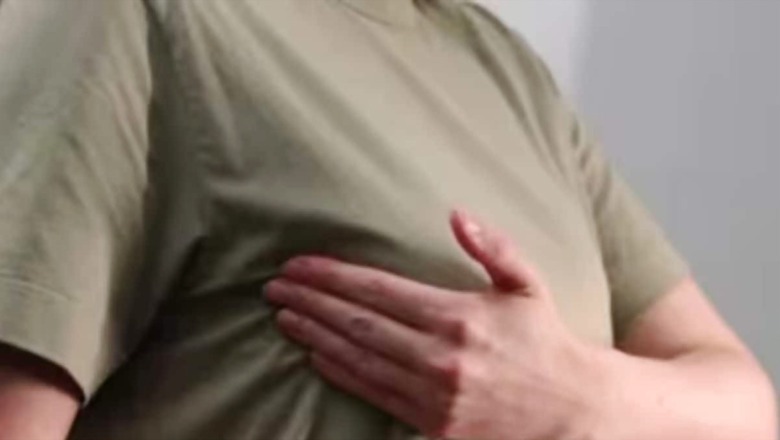
views
Breast self-examination (BSE) is a simple, proactive way for women to monitor their breast health. This step-by-step technique allows individuals to physically check their breasts for lumps, abnormalities, or changes in size, shape, or texture. Regular BSE can help detect potential signs of breast cancer early, empowering women to seek medical advice promptly if they notice anything unusual. It’s an essential tool in promoting breast awareness and overall health.
Dr Jyoti Anand, Senior Consultant- Medical Oncology, Fortis Hospital, Noida shares a method to recognise any changes in breasts immediately.
Why to do breast self-exam?
Monthly breast self-exams are helpful in identifying any signs of infection, breast disease or breast cancer. They cannot replace breast exams from a doctor and screening tests like mammograms. The goal of doing a breast self-exam is recognizing what’s normal for you and to alert as soon as you notice changes.
How often should I do a breast self-exam?
We recommend performing breast self-exam monthly.
When to do it?
People who are pre-menopausal (having a regular period) should perform a breast self-exam after their period ends.
People who have reached menopause and people who have very irregular periods can pick a day each month which is easy to remember, like the first day of the month, the last day of the month. It’s important to record findings also.
Is it a time taking procedure?
A breast self-exam takes only a few minutes and You can do a breast exam when you’re:
* Changing clothes.
* Lying in bed.
* Taking bath.
Red flag signs of breast cancer?
A self-breast examination isn’t a diagnostic tool for breast cancer. Some red flag signs of breast cancer are:
* Inverted nipple or nipples that stop sticking out.
* Redness, soreness, a rash or swelling on your breasts.
* Dimpling or puckering (like an orange peel) of the skin of your breasts.
* Spontaneous nipple discharge.
Why to do it?
* Breast self-examinations can help in the early detection of breast cancer, thereby improving the chances of a full recovery. Early diagnosis improves long-term outcomes.
Breast Self-Exam
- Examine your breasts in the shower.
- Examine your breasts in the mirror with your arms down, up, and on your hips.
- Stand and press your fingers on your breast, working around the breast in a circular direction.
- Lie down and press your fingers on your breast, working around the breast in a circular direction.
- Squeeze your nipples to check for discharge Check under the nipple last.




















Comments
0 comment